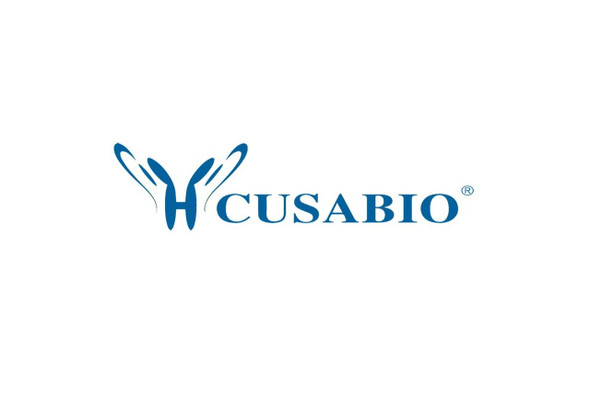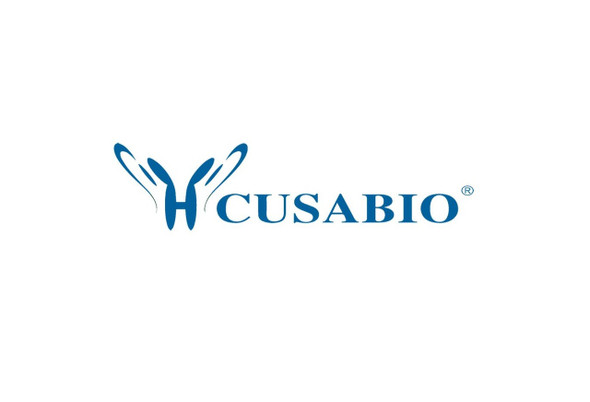Cusabio Human papillomavirus type 16 Recombinants
Recombinant Human papillomavirus type 16 protein E4 (E4) | CSB-EP356968HML
- SKU:
- CSB-EP356968HML
- Availability:
- 3 - 7 Working Days
Description
Recombinant Human papillomavirus type 16 protein E4 (E4) | CSB-EP356968HML | Cusabio
Alternative Name(s): E1^E4
Gene Names: E4
Research Areas: Neuroscience
Organism: Human papillomavirus type 16
AA Sequence: MADPAAATKYPLLKLLGSTWPTTPPRPIPKPSPWAPKKHRRLSSDQDQSQTPETPATPLSCCTETQWTVLQSSLHLTAHTKDGLTVIVTLHP
Source: E.coli
Tag Info: N-terminal 10xHis-tagged and C-terminal Myc-tagged
Expression Region: 1-92aa
Sequence Info: Full Length
MW: 17.5 kDa
Purity: Greater than 85% as determined by SDS-PAGE.
Relevance: Contributes to multiple aspects of the viral life cycle including viral genome amplification, suppression of suprabasal cell differentiation and egress of newly formed virions. Induces host cell cycle arrest at the G2 phase by associating with and preventing the nuclear entry of host CDK1/cyclin B1 complexes. Inhibits cellular DNA replication by preventing loading of host replication licensing proteins MCM2 and MCM7 onto chromatin. Within the cytoplasm, associates with host kinase SRPK1, a splicing factor regulator, and inhibits its activity. Therefore, E4 favors expression of late viral transcripts by inhibiting SRPK1-mediated phosphorylation of host serine-arginine proteins that have critical roles in mRNA metabolism. Late in the infectious cycle, E4 also acts to diminish the integrity of the keratinocyte by disrupting the keratin cytoskeleton and inducing apoptosis through alteration of mitochondrial function to facilitate egress of the newly formed virions.
Reference: "Phosphorylation of the human papillomavirus type 16 E1--E4 protein at T57 by ERK triggers a structural change that enhances keratin binding and protein stability." Wang Q., Kennedy A., Das P., McIntosh P.B., Howell S.A., Isaacson E.R., Hinz S.A., Davy C., Doorbar J. J. Virol. 83:3668-3683(2009)
Storage: The shelf life is related to many factors, storage state, buffer ingredients, storage temperature and the stability of the protein itself. Generally, the shelf life of liquid form is 6 months at -20?/-80?. The shelf life of lyophilized form is 12 months at -20?/-80?.
Notes: Repeated freezing and thawing is not recommended. Store working aliquots at 4? for up to one week.
Function:
Involvement in disease:
Subcellular Location:
Protein Families:
Tissue Specificity:
Paythway:
Form: Liquid or Lyophilized powder
Buffer: If the delivery form is liquid, the default storage buffer is Tris/PBS-based buffer, 5%-50% glycerol. If the delivery form is lyophilized powder, the buffer before lyophilization is Tris/PBS-based buffer, 6% Trehalose, pH 8.0.
Reconstitution: We recommend that this vial be briefly centrifuged prior to opening to bring the contents to the bottom. Please reconstitute protein in deionized sterile water to a concentration of 0.1-1.0 mg/mL.We recommend to add 5-50% of glycerol (final concentration) and aliquot for long-term storage at -20?/-80?. Our default final concentration of glycerol is 50%. Customers could use it as reference.
Uniprot ID: P06922
HGNC Database Link: N/A
UniGene Database Link: N/A
KEGG Database Link: N/A
STRING Database Link: N/A
OMIM Database Link: N/A









